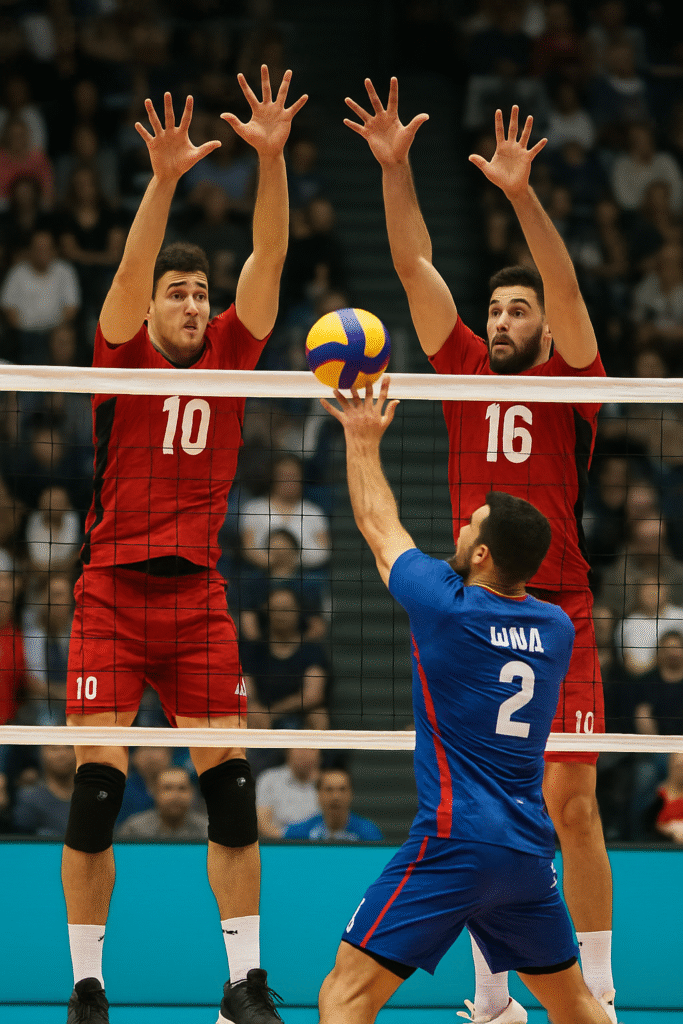Volleyball was invented in 1895 by William G. Morgan as a blend of basketball, baseball, tennis, and handball, intended for businessmen seeking a less strenuous alternative to basketball. Originally called “Mintonette,” the game evolved rapidly, gaining popularity in YMCAs across the United States and then spreading internationally. Over subsequent decades, its simplicity, minimal equipment requirements, and adaptability to indoor and outdoor settings fueled its growth into one of the world’s most beloved team sports.

Early Origins of Volleyball
In its inaugural form, “Mintonette” featured a net set at 6 feet 6 inches, and the rules borrowed heavily from tennis. The first official game took place at Springfield College (then known as YMCA College) on July 7, 1896. By 1897, the sport had been renamed “volleyball” to reflect the core action of volleying the ball back and forth over the net.https://www.volleyhall.org/volleyball-history.html
Global Spread of Volleyball
By 1913, it had reached Canada, and within five years it had appeared in countries across Europe, Asia, and South America. The formation of the Fédération Internationale de Volleyball (FIVB)https://www.fivb.com/en/thefivb/history in 1947 provided an organizational backbone that standardized rules and organized international tournaments. Volleyball’s debut at the 1964 Tokyo Olympics marked a milestone, cementing its status as a global competitive sport.
Read about the History of Sports
Basic Rules of Volleyball
In modern competitive play, the court measures 18 by 9 meters with a net height of 2.43 meters for men and 2.24 meters for women; the ball must be spherical, weighing between 260 and 280 grams.https://www.fivb.com/en/refereeingandrules/rulesofthegame_vbw_2024 Each team fields six players who rotate clockwise through six positions. A rally begins with a serve from behind the end line, and teams are allowed up to three successive contacts to return the ball over the net. Contacts may consist of a bump (forearm pass), set (overhead pass), spike (attack hit), and blockers’ touches.
Read about Rules of Baseball
Scoring System in Volleyball
Matches are typically best-of-five sets. A point is scored on every serve (rally scoring), with sets one through four played to 25 points and a decisive fifth set to 15 points; a two-point margin is required in all cases. Time-outs and substitutions add strategic layers, and libero players specialize in defensive roles without serving or rotating to front-row positions.

Famous Volleyball Festivals Around the World
Festivals showcase both indoor and beach disciplines, attracting amateurs and professionals alike. One of the most prestigious festivals is the FIVB Beach Volleyball World Championships, which draws over 192 teams annually to compete in high-stakes elimination brackets.
FIVB Beach Volleyball World Championships
Launched in 1997, this biennial event alternates venues across continents to promote inclusivity. Past hosts include Rome (2006), Vienna (2017), and Hamburg (2019). Champions earn not only medals but also valuable world ranking points that impact Olympic qualification.
Montreux Volleyball Masters
The Montreux Volleyball Masters in Switzerland began in 1984 as an invitational tournament featuring the top eight national teams. Held every May in Montreux, it serves as a high-intensity warm-up for the annual FIVB Nations League and Olympic qualifiers.
Kings Cup Volleyball Tournament
It was founded in 1981, celebrates the nation’s monarch and welcomes eight national teams each August. Known for its vibrant fan culture, the festival blends competition with local cultural performances, drawing crowds exceeding 10,000 spectators.
Renowned Volleyball Teams and Players
Many consider the Brazilian men’s national volleyball team to be among the greatest ever, boasting three Olympic gold medals (1992, 2004, 2016) and multiple World Championship titles.https://www.volleyhall.org/karch-kiraly.html
Legendary Volleyball Teams
- Soviet Union (USSR): Dominated early Olympic and World Championship stages between 1964 and 1980, laying the tactical groundwork for modern play.
- Brazil: Known for dynamic offense and the “Golden Generation” led by coach Bernardo Rezende, securing back-to-back World League titles in 2004 and 2005.
- United States: The women’s team captured gold in 1984, 2008, and 2012, while the men’s side won in 1988 and 2008, thanks to robust collegiate programs fostering elite talent.
Iconic Volleyball Players
- Karch Kiraly (USA): Only athlete to win Olympic gold in both indoor (1984, 1988) and beach (1996) disciplines; later coached the U.S. women’s team to Olympic gold in 2021.
- Giba (Brazil): Rafael “Giba” Ferreira led Brazil to two World Championship victories (2002, 2006) and was named FIVB World Player of the Year in 2004.
- Misty May-Treanor & Kerri Walsh Jennings (USA): This duo claimed three consecutive Olympic golds (2004, 2008, 2012), redefining beach play with their seamless chemistry and relentless defense.
Conclusion
Today, it remains one of the most popular team sports worldwide, engaging millions of recreational and professional players across over 200 national federations. Its adaptability—from indoor arenas to sun-drenched beaches—and its blend of athleticism, strategy, and camaraderie ensure it will continue inspiring future generations.
